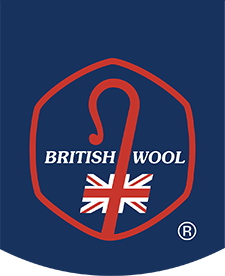Fleece Presentation
After shearing, throw out the fleece on to a clean surface, flesh side down. Fleeces from Blackface, Herdwick and Rough Fell breeds should be laid flesh side up.
Remove any extraneous matter and daggings which may have been missed pre-shearing.
Where possible pack fleeces from different breeds and types separately to avoid cross contamination and a reduced wool value.
- Keep hill wool with lowland wool seperate. Kemp from hill wools can cause cross contamination and spoil lowland fleeces.
- Don't mix coloured wool with white wool. Coloured fibres will contaminate white wool.
- Seperate wool from hoggs with wool from ewes and wethers.
- Keep Bluefaced Leicester and Teeswater / Wensleydale fleeces separate from mule fleeces. Fleeces can be placed in a bag within the same wool sheet.
- Do not mix oddments with fleece wool.
- Roll fleeces properly. Only fleeces which are rolled can be graded and paid for at fleece wool prices. Unrolled wool will be valued as ‘broken’ wool, which is paid at a much lower rate.
- Remove all claggs and daggings. There is a price penalty for claggy and undocked fleeces.
Wool Handling - Step by Step
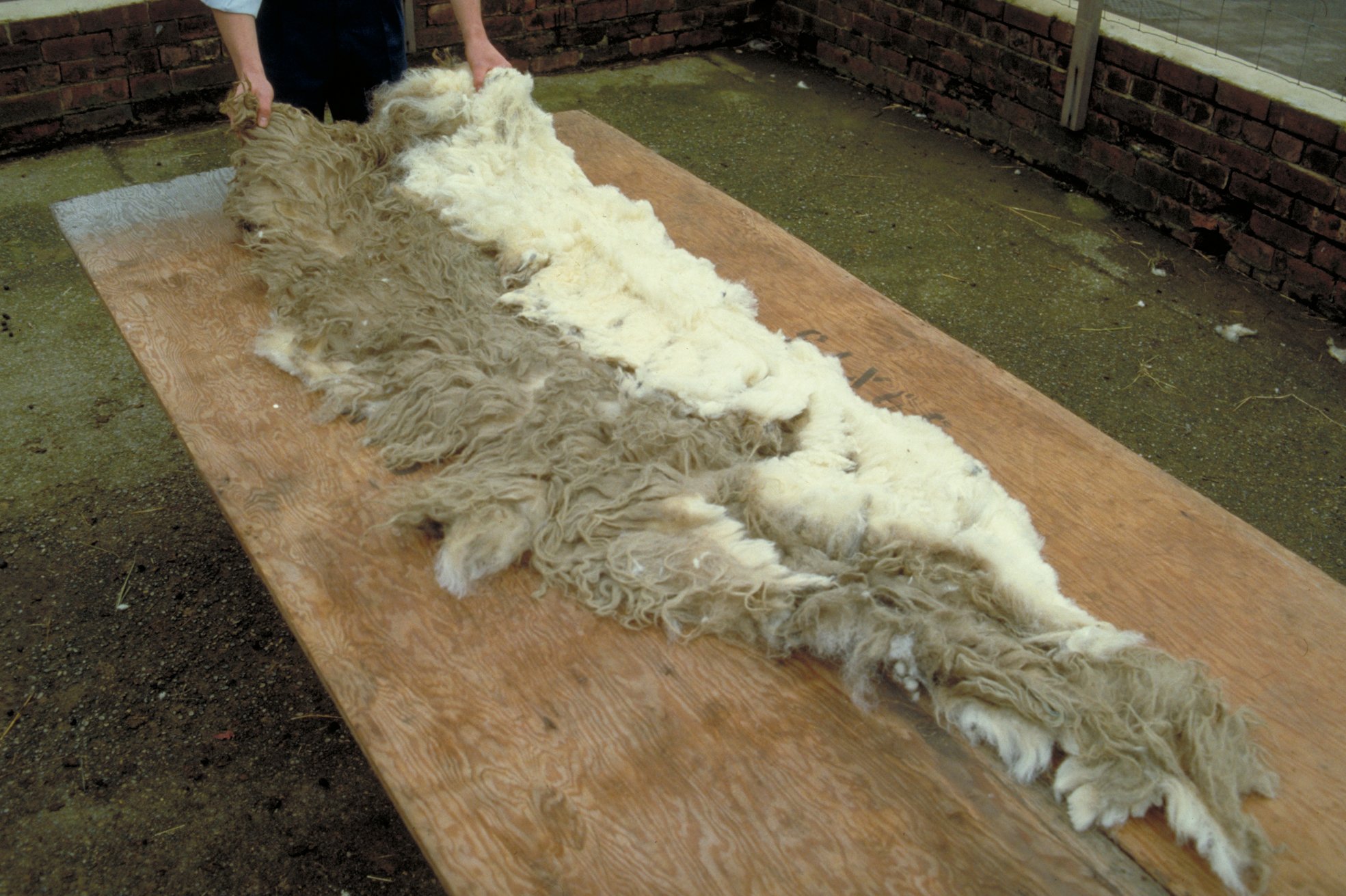 Step 1
Step 1
Include only clean, dry belly wool with the fleece before folding the flanks towards the centre.
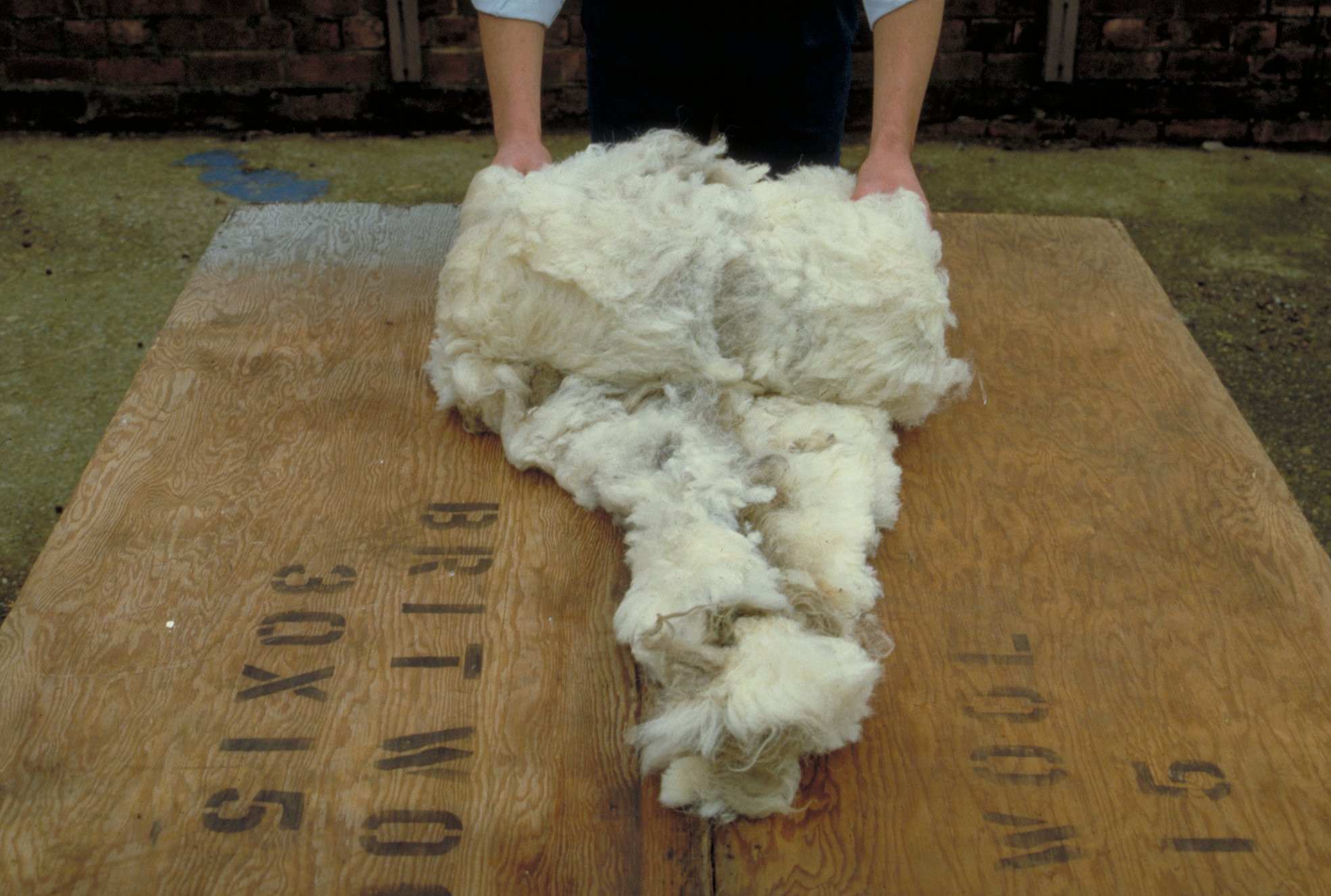 Step 2
Step 2
Turn in the britch end and roll the fleece firmly and neatly towards the neck.
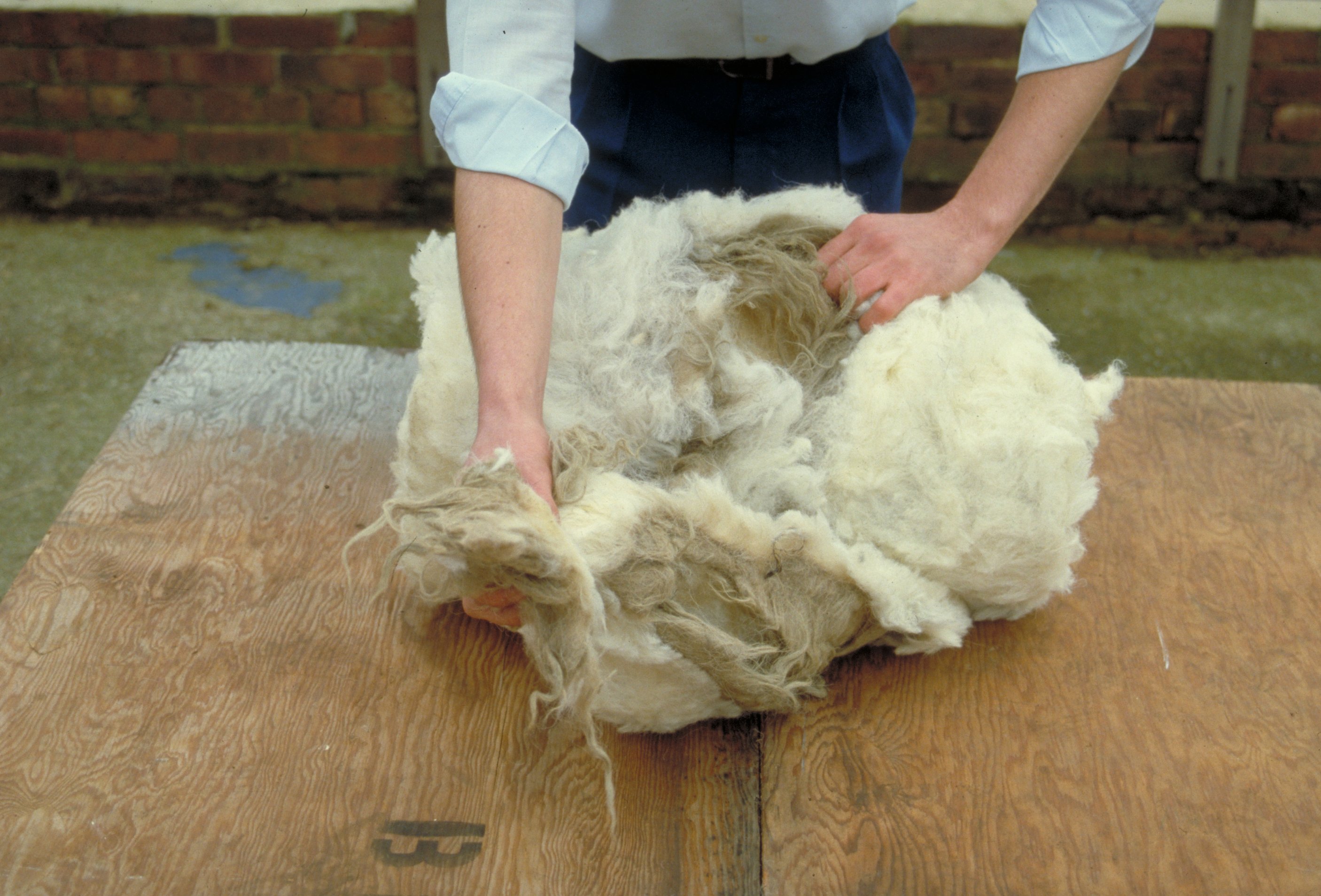 Step 3
Step 3
After rolling, part the fleece.
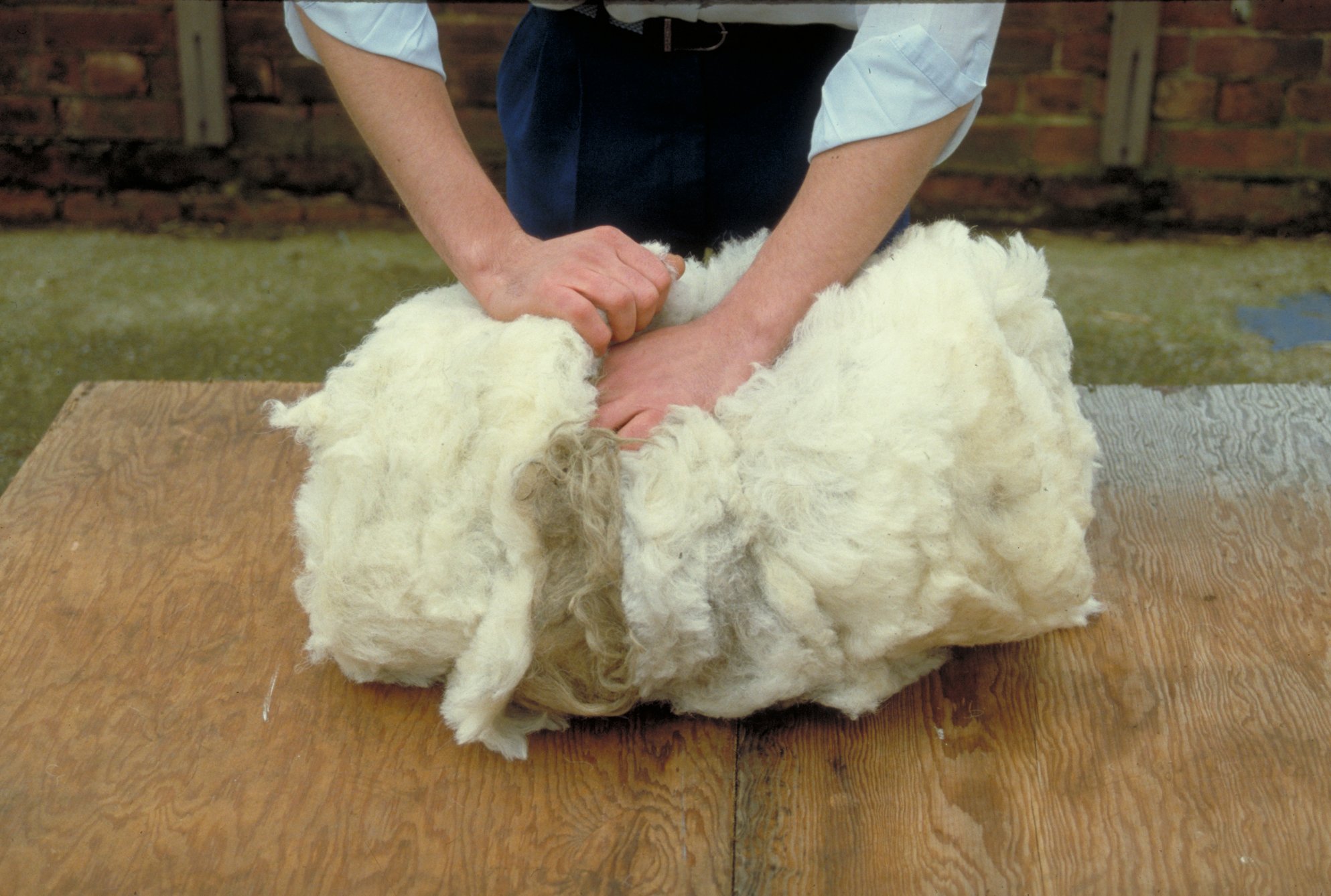 Step 4
Step 4
Without twisting, tuck the neck wool firmly into the body of the fleece.
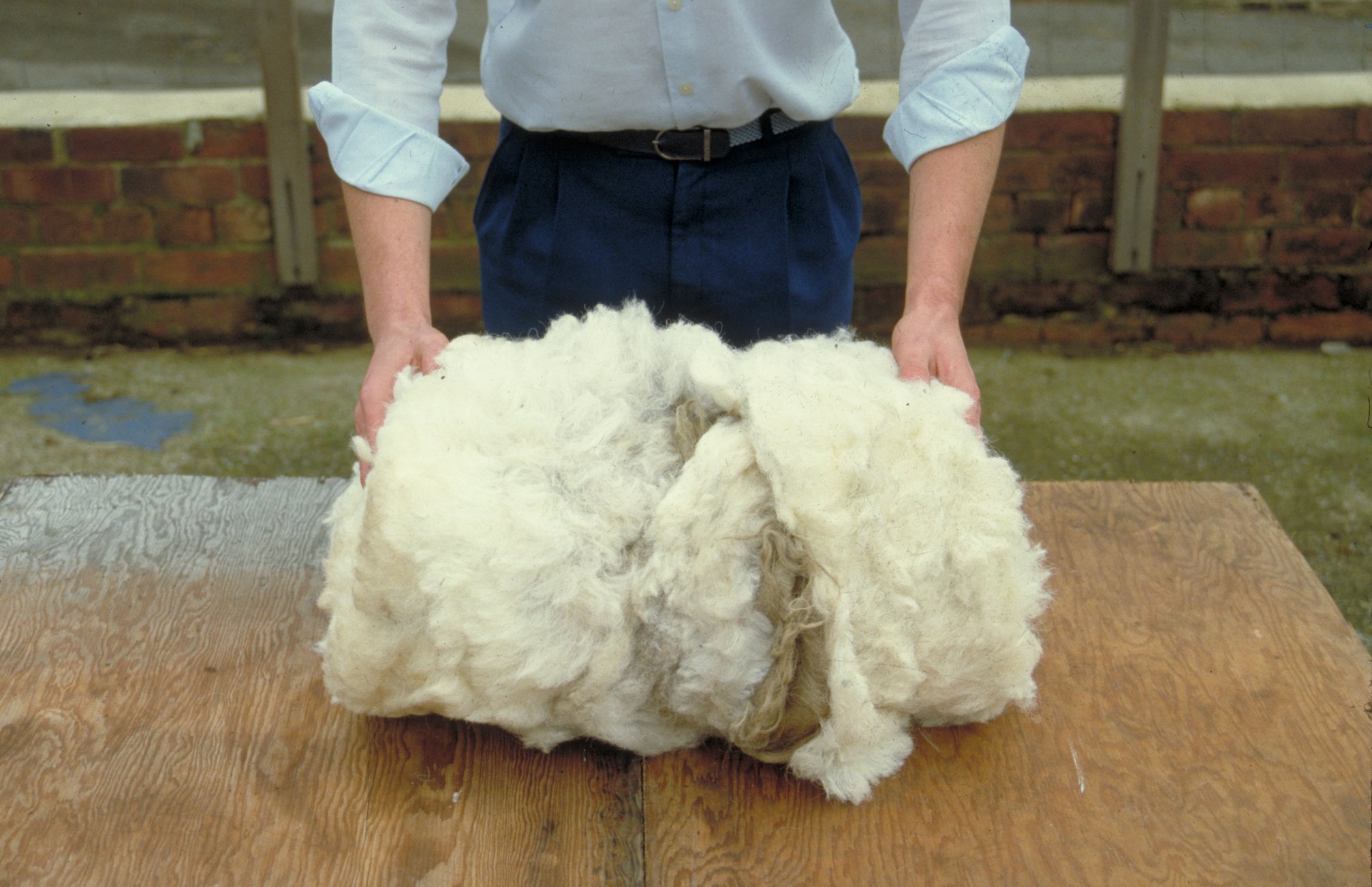 Step 5
Step 5
The finished fleece is firm and secure. Place the tucked fleece firmly into the wool sheet.
